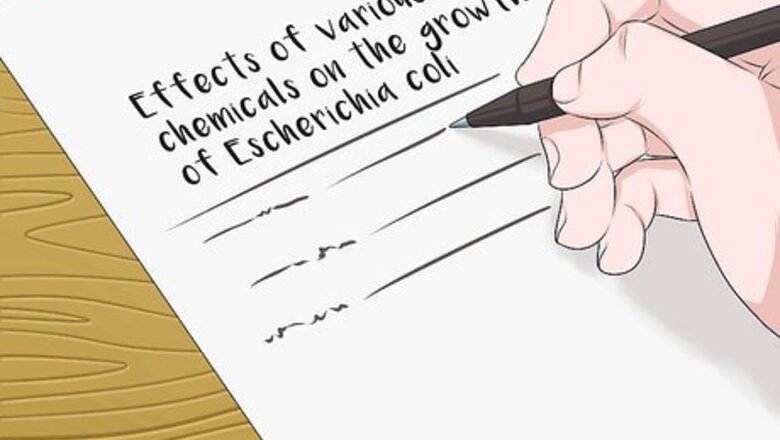
views
Creating Your Title Page

Create a title that is brief but concise. It should give a clear idea of what the experiment was about. If you have a specific result you should also state it. Don’t overthink the title, just describe the experiment. Do not make it longer than ten words. A good example for a title would be: "Effects of various chemicals on the growth of Escherichia coli."
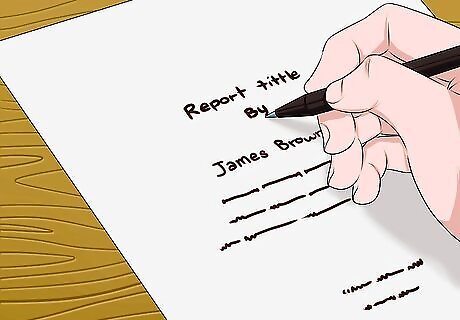
Be sure to include your name on the title page. You want to be sure you receive credit for the work. If you have a group report include the name of all students in your group.
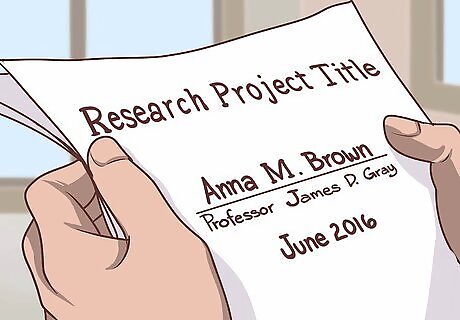
Add the class title, date, and the instructor's name below your title. Your instructor may have a specific set of instructions. If not, you just want to make it easy for them to keep track of your work.
Writing Your Introduction
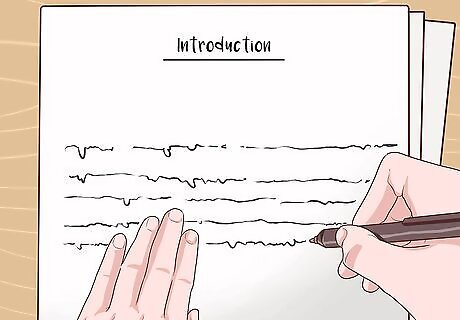
State the problem. The introduction should give the framework for the report and shows that you understand the purpose of the study. Explain what you are studying, why it is important, and how you are going to attempt to gain knowledge in your study.
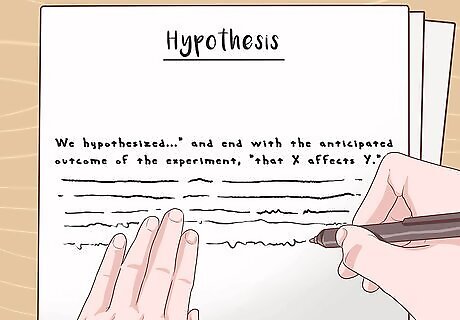
Present your hypothesis. These are the results that you expect to observe over the course of the experiment. The hypothesis is not always going to be confirmed by the results, rather it is just the prediction made prior to performing the experiment. A good hypothesis will begin with "We hypothesized..." and end with the anticipated outcome of the experiment, "that X affects Y."

Include any background information the reader needs to understand why the experiment is needed. Include any historical or theoretical background that is relevant to the research. This is usually accomplished by a literature review of published, peer-reviewed, primary materials. Define terminology. If your report uses any specific terminology or jargon, explain it in the introduction. Use the appropriate vocabulary to explain what you are doing. You are likely trying to test, document, or describe something. You cannot prove, verify, or demonstrate the truth about something as this is not possible within the realm of science. Make sure your word choices reflect this within your report.
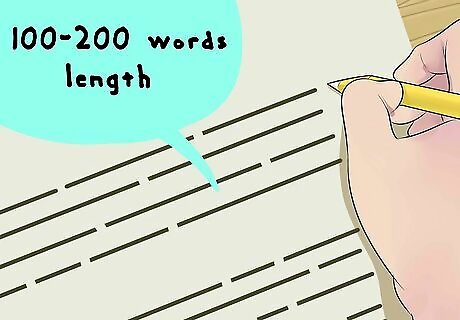
Summarize with an abstract. This section is not always included in lab reports. An abstract is a very concise summary of the entire experiment. It should cover why the experiment was conducted, what methods were used, what was the main result, and what were your overall conclusions. Often, this section is only one paragraph (100-200 words) in length.
Listing Material and Methods
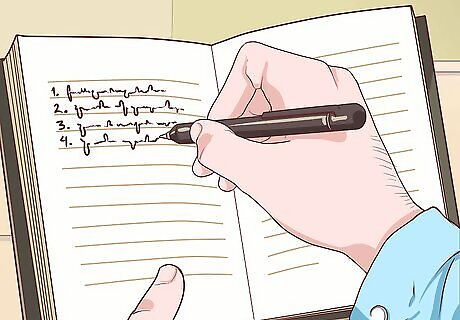
List all of your materials used in the lab. Incorporate the material descriptions into the procedural explanation as the items were used during the experiment. Include specific amounts, times, and measurements.
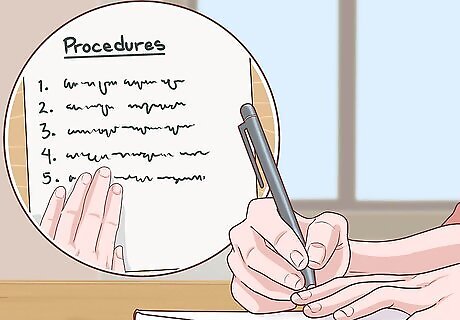
Write a step-by-step description of the procedures. The level of detail should be high enough to allow someone else to duplicate your experiment, without including any unnecessary information that may overwhelm the reader. Describe how you gathered specimens, or if the experiment was done outside you can describe weather that could be a factor on the experiment. If you can reproduce the experiment without the information, then you should leave it out.
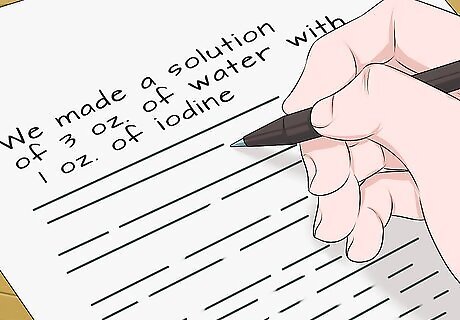
Write this section in the past tense. It should read like an accounting of what you did, not an instruction manual. For example, "We made a solution of 3 oz. of water with 1 oz. of iodine." This section is usually written in the first person perspective, using either active or passive voice. Some academic requirements use third-person perspective. Try to keep the writing as straightforward and easy to follow as possible.
Explaining Results
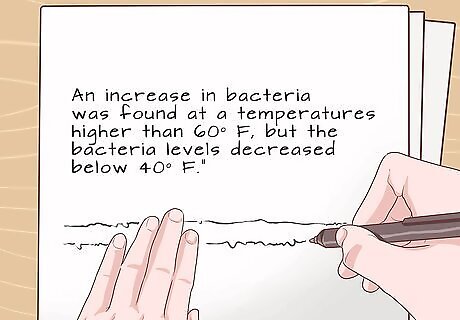
Describe your results. This is the collection of all the factual data obtained from your experiment. State the results in the text first, then use visual aids to show the data. Tables and graphs are not self-explanatory and have to be described and explained to the reader in the text. For example, "An increase in bacteria was found at a temperature higher than 60 °F (16 °C), but the bacteria levels decreased below 40 °F (4 °C)."
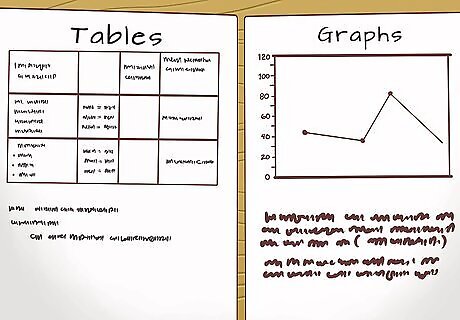
Organize the data. Charts, tables, and graphs are often useful in presenting this information in an easy to understand format. Every chart, table, or graph should be labeled. It should also have an accompanying paragraph explaining the information it contains.
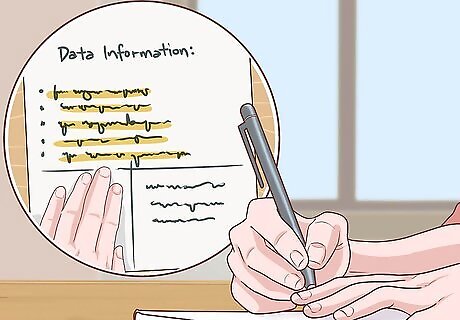
Identify any trends or patterns within the data. You want to make sure these are made clear to the reader in the results. Do not interpret the data in the results. Interpreting the data will be done in the concluding section.
Drawing a Conclusion

Include a summary of the data. Try not to copy from the data section. Highlight key points of information from the data that are most relevant to drawing your conclusion, then elaborate with your interpretation of the data.
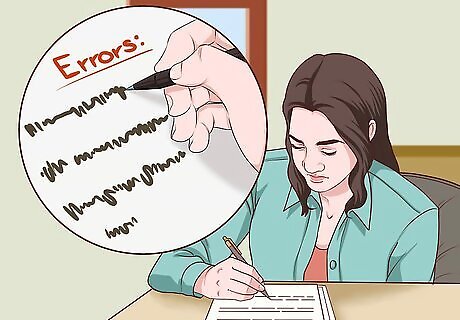
Discuss possible errors in the experiment. Comment on what you think may have caused the error. Offer an explanation how could the experiment be changed to correct them. Only discuss errors if they are verified by data in your study. If rainy conditions seemed to influence the unexpected outcome, then state that. But do not state that rainy conditions could have caused errors if there is no evidence to support it.
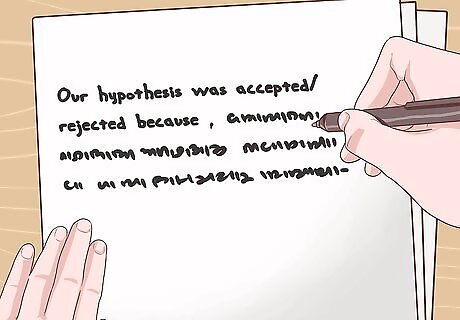
Present your conclusion. This is where you interpret the results of the experiment. Accept or reject your hypothesis and explain why. Your goal is to convince the reader that you completely understand the data and have considered it fully and intelligently. Accepting or rejecting your hypothesis can be done easily by stating "Our hypothesis was accepted/rejected because..." Then continue with your explanation.
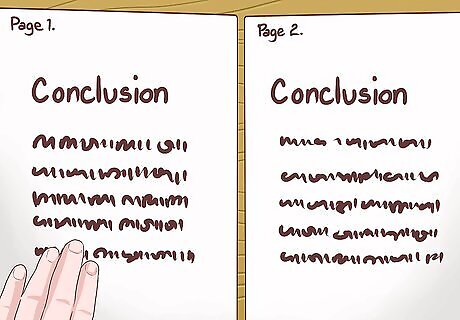
Aim for 1-2 pages for the conclusion. Having a longer conclusion doesn’t make it better. Just present the information that is relevant to your conclusion in an organized and logical manner.
Crediting References
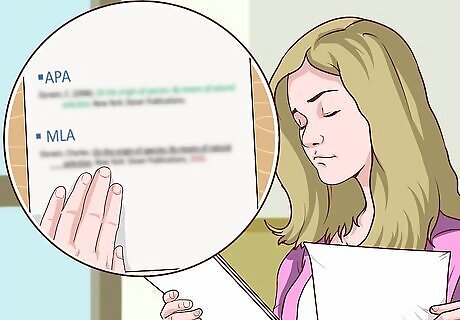
List your citations. Use a formal bibliography format such as APA or MLA, depending on your report criteria.
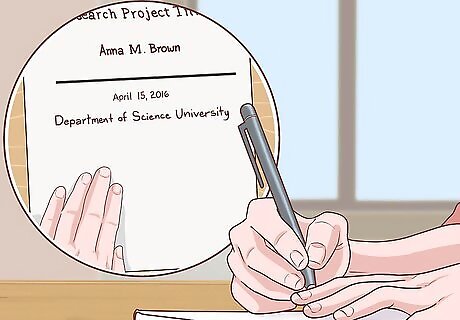
Give credit where credit is due. Make sure any sources are properly credited. You don’t want to have your hard work discredited because you forgot to cite a source. Schools and professors take plagiarism very seriously and it can have serious consequences. The way in which you cite each source is: Last name of author, first initial. Year published. Title of article. Name of journal volume number, page range For example: Frantzis, A. 1998. Does acoustic testing strand whales? Nature 392(6671), 29. Cite the lab manual where relevant.
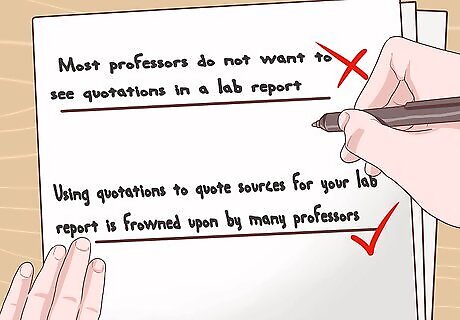
Paraphrase ideas from others in your report. Most professors do not want to see quotations in a lab report. They prefer that you paraphrase all your sources and present the ideas in your own words. You can weave the information into your text with a simple lead in phrase and by adding a parenthetical note. Paraphrasing can be confusing. You can't just change a few words. For example, "Most professors do not want to see quotations in a lab report," can be paraphrased as "Using quotations to quote sources for your lab report is frowned upon by many professors." The idea is still clear, though the sentence is unique and original.
Formatting Your Report

Use a reasonable font. The font size should be in 12 pt unless otherwise specified your instructor. Use a traditional font such as Arial or Times New Roman.
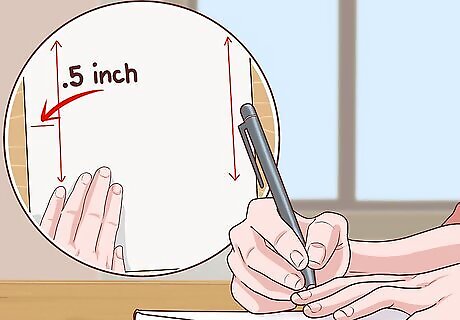
Margins should not be less than .5 inches. Some instructors prefer them to be a full inch. Check with your professor to see what is acceptable for your class.
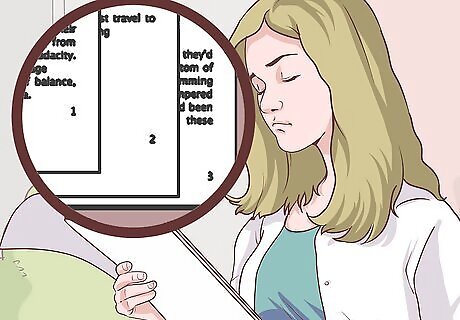
Include page numbers. Some instructors will prefer them at the top of the page and some may prefer the bottom. Be consistent in their placement from page to page. Also, check to see if any additional information, such as your last name, is required on each page.

Add headings for your sections. Each section should be clearly titled and follow this appropriate order: Introduction Methods and Materials Results Discussion Citations

















Comments
0 comment